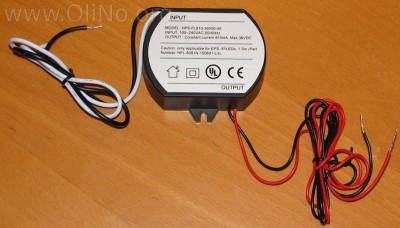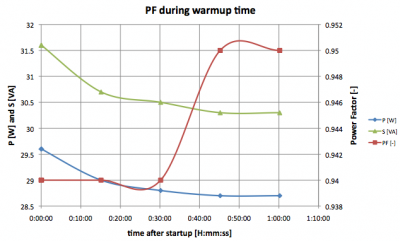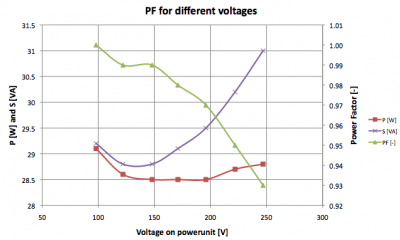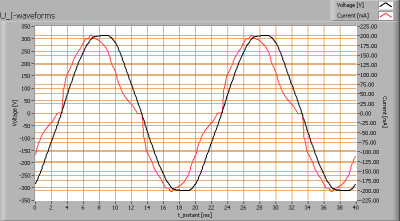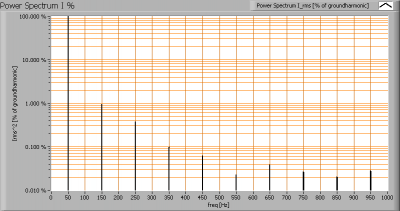![]() In this short article I explain a measurement on the power factor. Measured is a led tube light from LedLightEurope. This is a 1500 mm long tube equipped with 81 smd leds. The power supply that is delivered as a separate block, is not in the tube and could be put inside the tube holder or close to it.
In this short article I explain a measurement on the power factor. Measured is a led tube light from LedLightEurope. This is a 1500 mm long tube equipped with 81 smd leds. The power supply that is delivered as a separate block, is not in the tube and could be put inside the tube holder or close to it.
This article is available in measurement report: ![]()
Power Supply Unit
The used PSU is a black box. It can handle input voltages from 100 – 240 V and takes care of an output current of 810 mA, which is what the leds need.
The PSU used for the led tube light, in not build in the tube but put externally
Power factor measurements
The power factor is measured during warm up of the tube.
PF, S and P during the warming up of the tube.
The consumed power P, as well as the apparent power S and the resulting power factor are all very stabl during the warmup period. See the scale values, the PF varies in between 0.94 and 0.95 which is due to rounding the values.
After that the lamp voltage is varied over the allowable range.
PF, S and P at different lamp voltages.
The PSU does its work well: little variations seen in all three parameters, when the lamp voltage is varied over the entire range of values from 100 – 250 V. The power factor remains high, between 0.93 and 1.0.
Current- and voltage form
The current and voltage are measured with a high sample frequency. The values are plotted in a graph, enabling to see their form. This form remains mainly the same for all tested lamp voltages.
Form of current and voltage when the led tube is fed with 227 V AC power.
The voltage form is a nice sine, and the current form is almost a sine. This current’s phase is also close to that of the voltage, resulting in a power factor close to 1.
Harmonic content of the current.
Little harmonic content, showing that the PSU is well adapted to the led tube.
